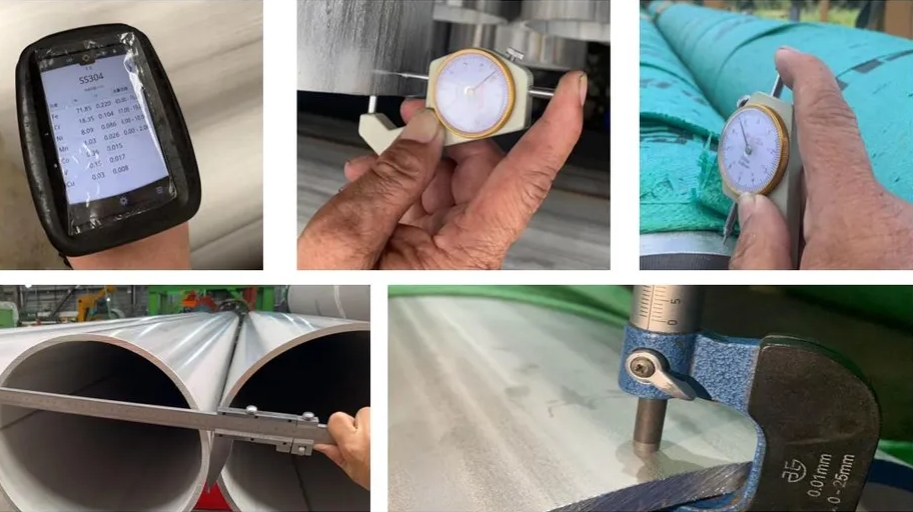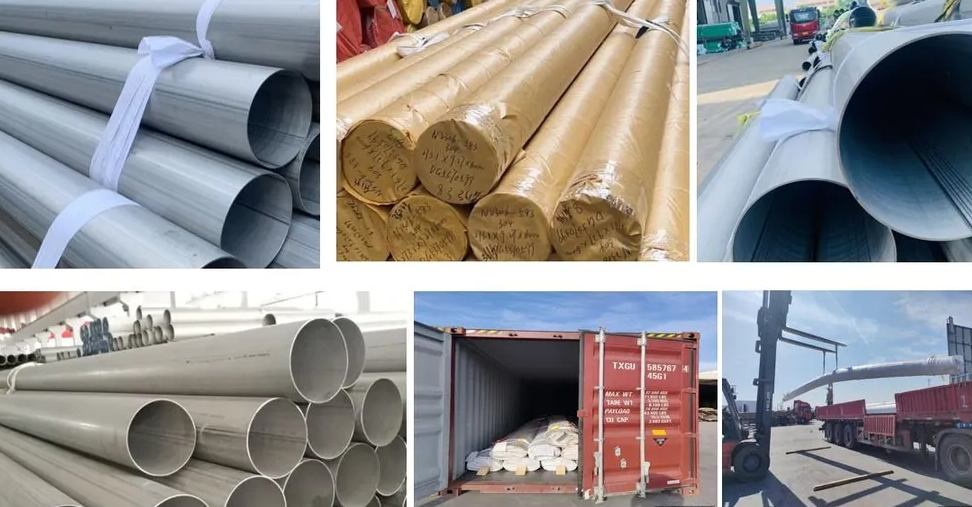
ASTM A-358/A-358M Specification for electrofusion welded chromium-nickel austenitic stainless steel pipes for high temperature and general use. The products shall comply with the requirements of TSG D7002 pressure piping component type test rules.
Common grades: 304, 304L, 304H, 310S, UNS S31254, 316L, 316H, 317, 321, 321H, 347, 347H, UNS N08810, UNS N08811, and more grades.
Common specifications: outer diameter 57mm~2680mm, thickness: 1.2mm~60mm.
Production method: welding (class 1, class 2, class 3, class 4, class 5)
Delivery status: heat treatment + pickling.
Application areas of ASTM A358 welded stainless steel pipes
Chemical industry: Facing various corrosive media, it is widely used in chemical raw materials, solvents and acid and alkali storage.
Oil and gas industry: Its high temperature and corrosion resistance make it excel in oil and gas transmission pipelines.
Marine engineering: It performs well in seawater environments and is suitable for seawater desalination systems and offshore platform construction.

| Name | ASTM A358 Electric-Fusion-Welded Austenitic Chromium-Nickel Stainless Steel Pipe |
| Material Grade | TP304 TP304L TP316 TP316L TP347 TP347H TP321 TP321H TP310 TP310S |
| TP410 TP410S TP403 | |
| S31803/S32205 S32750 S32760 | |
| Outer Diameter | Welded Pipe: single slit(Φ8mm-Φ630mm); girth(Φ630mm-Φ3000mm), |
| Thickness | Welded Pipe: single slit(0.5mm-25mm);girth(3mm-45mm) |
| Length | 5.8-6.1 m or as customers' request |
| Tolerance | Acording to the Standard. |
| Surface | 180G, 320G, 400G Satin / Hairline |
| 400G, 500G, 600G or 800G Mirror finish | |
| Test | UT, ET, HT, RT,ect, and others according to the standard,or as the requests of the customers |

Why choose GNEE
We will guarantee the quality of your product. Including raw material inspection, supervision of production process, appearance inspection and inspection for the finished products. We will provide our distinctive packing which improves the protection rate of goods by 30%. Besides, we accept customized packing.

.jpg)

.jpg)





Inspection and testing
Non-destructive testing (NDT):
X-ray testing (RT): Check for internal defects in welds.
Ultrasonic testing (UT): Detect deep defects in welds and parent materials.
Liquid penetrant testing (PT): Check for surface cracks.
Destructive testing:
Tensile test: Verify the strength of welds and parent materials.
Bend test: Evaluate the ductility of welds.
Impact test (optional): Test low-temperature toughness.
Hydraulic pressure test: Apply specified pressure to ensure no leakage (Class 1 required, other categories optional)




